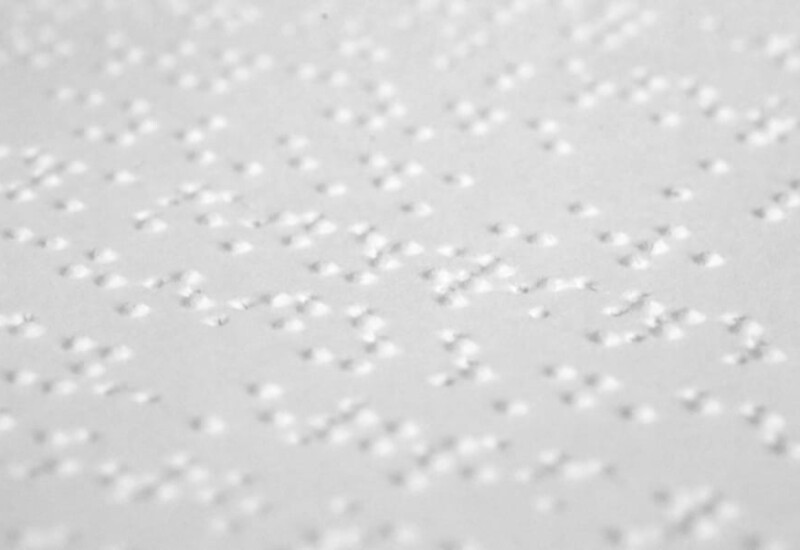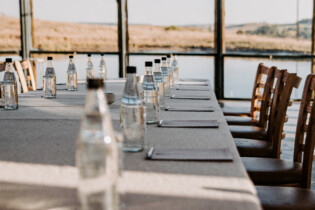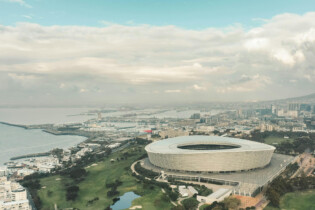Part III: access for those with visual impairments. Click here for Part I, which covers event access for wheelchair users, and here for Part II, which covers access for those with hearing disabilities.
If you have read Part I and Part II of ‘IS everyone invited?’, you may have started to notice that many of the adaptions to improve event access for those with disabilities are beneficial for everyone – such as wide aisles, clear signage, better lighting and acoustics. The same can be said for many of the recommendations here for hosting people who have visual disabilities.
Here are 14 ways to help improve event access for those who have low vision or are blind.
- Select a venue that has good lighting and colour contrast, and clear signage and acoustics, says Danie Botha-Marais from the National Council for Persons with Physical Disabilities in SA (NCPPD). He adds that carpets with busy patterns or designs can be disorientating for those with visual impairments.
- Also check that the venue has Braille in the lifts and at other keys areas like the bathrooms, and accessible pedestrian signals for crossing intersections – such as ones with audible tones and vibrotactile surfaces.
- You can consider hiring staff to usher and assist guests. They should receive some basic training on how to help people with disabilities in a respectful and appropriate manner.
- Jace Nair, the CEO of Blind SA, says, “Guides or personal assistants should be allowed to accompany blind persons to events. It’s good practice that they are given complimentary access.”
- Jace also recommends that tables and assistance is provided during tea/coffee breaks; “It is difficult to hold a cup in your hand, the plate in your other hand and drink/eat, so make sure there are places to put things down and within easy reach.”
- If printed material is being used, Danie and Jace both advise you use a large, clear print, and consider offering a Braille alternative. Braille Services is a non-profit organisation that supplies Braille in all 11 official languages at 25% of the cost of production. However – not all blind people can read Braille, so check this first, and consider how you can provide the same information aurally.
- If there are changes to the programme or important announcements to make, these should be done regularly, either over the intercom, or by the MC or speakers.
- Aisles need to be wide enough for people using a service dog or cane to move around freely, and Deirdré Gower, a founder of Warriors on Wheels, adds that you will also need to accommodate service dogs with water and a suitable outdoor space to relieve themselves.
- “Specialised GPS walking navigation devices are available, although expensive,” says Jace. “Alternatively, a tactile graphic map should be available or the hosts should describe layout/features.”
- Reserve seating up-front in the audience for those with visual impairments. Make sure they have a clear line of vision to the speakers (to benefit those with low vision) and can hear clearly.
- If you have speakers using presentations, pass on the World Blind Union’s guidelines to them, to ensure they are easy to read for those with visual impairments. Also advise your speakers to talk through their presentation thoroughly, addressing everything on the slide and using nouns rather than pronouns (this, that, etc.).
- “It’s useful to share information electronically with event attendees, either via email, a memory stick or CD,” adds Jace. This can be done before the event, so that attendees have access to it as needed.
- You can also consider live streaming for those who may struggle to physically attend your event.
- For exhibitions, Deirdré suggests that exhibit materials be presented in a way that encourages touch – as is done at the Blindiana Barista in Worcester, which has a fossil museum where all of the fossils are openly displayed so visitors can touch and feel them, and descriptive plaques include Braille descriptions. Jace also proposes audio descriptions be made available for stage performances, tours of exhibits, etc.
A final crucial piece of advice
You will need to plan your emergency egress to accommodate people with different abilities, says Danie; “You must have a clear and easy to implement emergency plan. There must be an audible and visible emergency alarm system, and the emergency evacuation plans must be available in a large font, and explained to those who cannot read.” Emergency doors should be easy-to-open for everyone – not just those with disabilities, but also children and the elderly, for example.
For additional information on how to make your more event accessible for those with visual disabilities, please contact these organisations:
- Blind SA: blindsa.org.za
- National Council for Persons with Physical Disabilities (NCPPD): www.ncppdsa.org.za
- South African National Council for the Blind (SANCB): www.sancb.org.za







